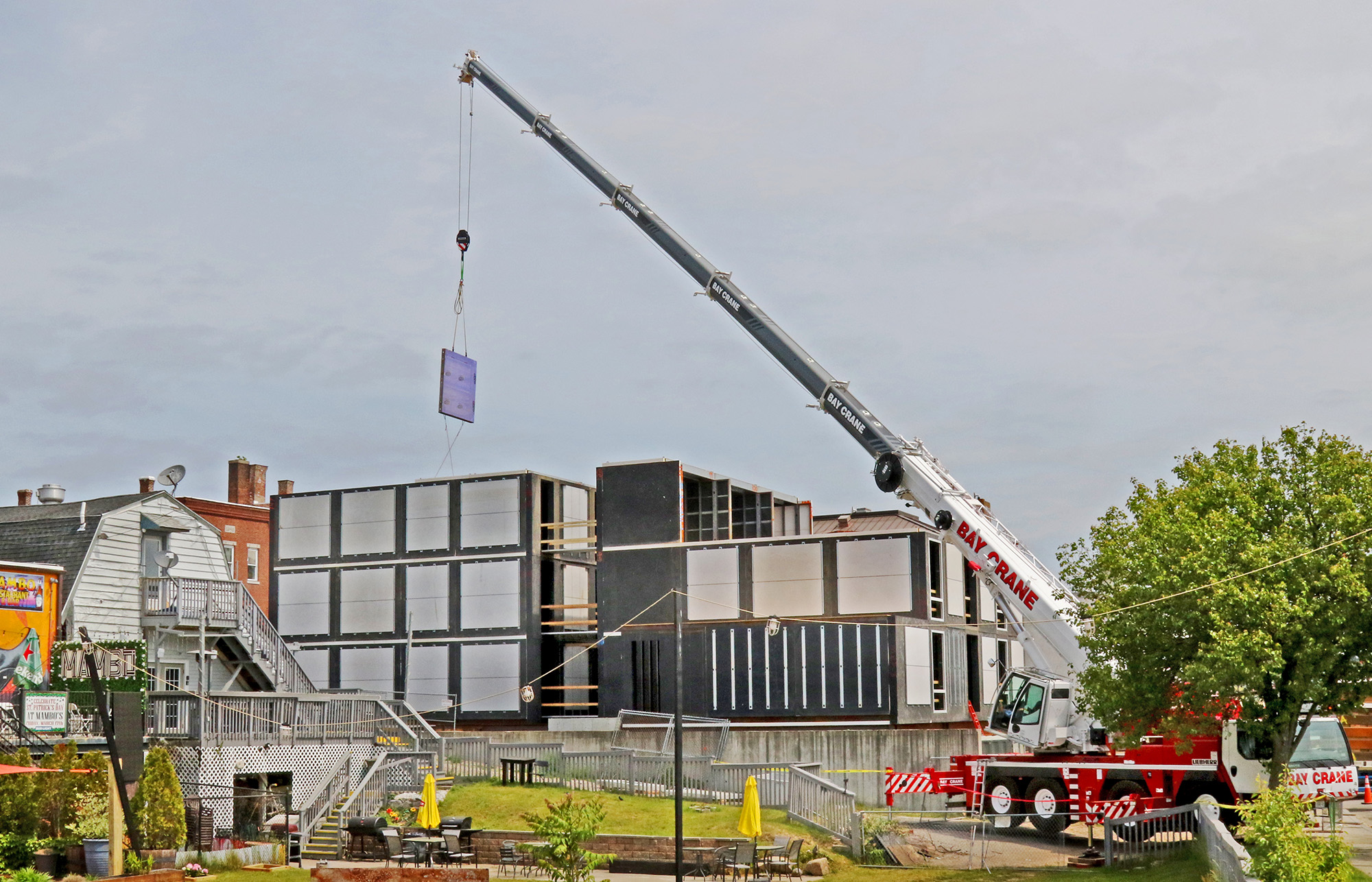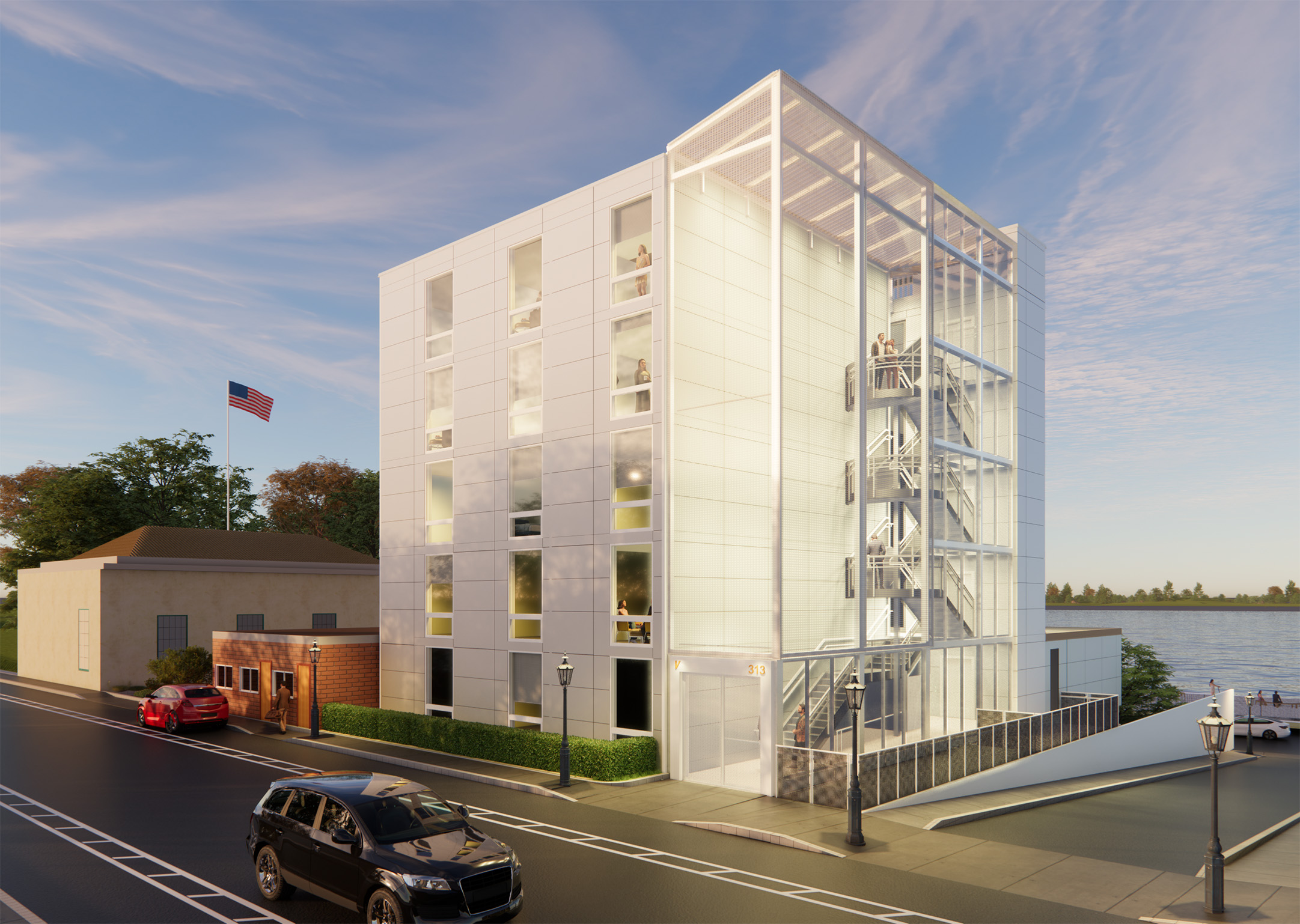Investment firm Mastry Ventures and LENx, the venture arm of homebuilder Lennar, have co-invested in Vessel Technologies’ next-generation housing product. Vessel, a housing product development company, aims to cultivate a pathway to creating attainable housing across the country.
The company’s housing system is focused on “reimagining the apartment building as a consumer product by creating exciting, sustainable, and user-centric housing at attainable prices,” according to Vessel. This is done by prefabricating wall and ceiling components in Vessel’s own manufacturing facility—cutting costs and time compared to traditional construction methods.
Vessel Technologies’ All-Electric Prefab Building System
The Vessel system is 100% electric; solar panels affixed to the rooftop deliver all of the power required for occupants. With the company’s aim for sustainability, Vessel uses no paint and instead utilizes a proprietary recyclable wall panel system. According to Vessel, its facade system is also twice as energy efficient as built-to-code alternatives.

“Vessel represents a whole new category of housing, innovative in every way, to fill a tremendous void: the dearth of truly excellent, deeply desirable and economically accessible rental homes,” said Sam Landman, Co-Founder and Managing Partner of Mastry Ventures.
The investment in Vessel Technologies by Masty and Lennar will allow the product company to accelerate its efforts of providing high-quality buildings, from rental housing to hospitals and universities. Vessel touts its patented system’s seamless design, with operable pieces that smoothly fit together.
Based in New York City, Vessel currently has 12 projects under development throughout the Northeast—all of which are targeted to be net zero. The company’s building materials are sustainable, fire-resistant, and aim to pair well with proprietary smart tech software.
The software—utilizing the company’s own operating system, vOS—acts as a virtual “super” that monitors the building’s hardware, energy demands, and water usage. Additionally, the system includes hundreds of sensors and electro-mechanical devices to manage a unit’s temperature, air quality, security, lighting, and entertainment systems, according to Vessel.
Related Stories
Modular Building | Aug 13, 2024
Strategies for attainable housing design with modular construction
Urban, market-rate housing that lower-income workers can actually afford is one of our country’s biggest needs. For multifamily designers, this challenge presents several opportunities for creating housing that workers can afford on their salaries.
Affordable Housing | Aug 7, 2024
The future of affordable housing may be modular, AI-driven, and made of mushrooms
Demolished in 1989, The Phoenix Ironworks Steel Factory left a five-acre hole in West Oakland, Calif. After sitting vacant for nearly three decades, the site will soon become utilized again in the form of 316 affordable housing units.
MFPRO+ New Projects | Jul 31, 2024
Shipping containers converted into attractive, affordable multifamily housing in L.A.
In the Watts neighborhood in Los Angeles, a new affordable multifamily housing project using shipping containers resulted in 24 micro-units for formerly unhoused residents. The containers were acquired from a nearby port and converted into housing units at a factory.
Great Solutions | Jul 23, 2024
41 Great Solutions for architects, engineers, and contractors
AI ChatBots, ambient computing, floating MRIs, low-carbon cement, sunshine on demand, next-generation top-down construction. These and 35 other innovations make up our 2024 Great Solutions Report, which highlights fresh ideas and innovations from leading architecture, engineering, and construction firms.
Contractors | Jun 4, 2024
Contractors expect to spend more time on prefabrication, according to FMI study
Get ready for a surge in prefabrication activity by contractors. FMI, the consulting and investment banking firm, recently polled contractors about how much time they were spending, in craft labor hours, on prefabrication for construction projects. More than 250 contractors participated in the survey, and the average response to that question was 18%. More revealing, however, was the participants’ anticipation that craft hours dedicated to prefab would essentially double, to 34%, within the next five years.
Building Tech | May 21, 2024
In a world first, load-bearing concrete walls built with a 3D printer
A Germany-based construction engineering company says it has constructed the world’s first load-bearing concrete walls built with a 3D printer. Züblin built a new warehouse from a single 3D print for Strabag Baumaschinentechnik International in Stuttgart, Germany using a Putzmeister 3D printer.
Adaptive Reuse | May 15, 2024
Modular adaptive reuse of parking structure grants future flexibility
The shift away from excessive parking requirements aligns with a broader movement, encouraging development of more sustainable and affordable housing.
Healthcare Facilities | Mar 18, 2024
A modular construction solution to the mental healthcare crisis
Maria Ionescu, Senior Medical Planner, Stantec, shares a tested solution for the overburdened emergency department: Modular hub-and-spoke design.
Modular Building | Feb 6, 2024
Modular fire station allows for possible future reconfigurations
A fire station in Southern California leveraged prefab, modular construction for faster completion and future reconfiguration.
Modular Building | Jan 19, 2024
Virginia is first state to adopt ICC/MBI offsite construction standards
Virginia recently became the first state to adopt International Code Council/Modular Building Institute off-site construction standards.


















